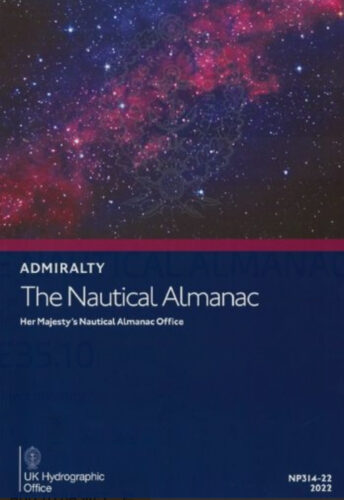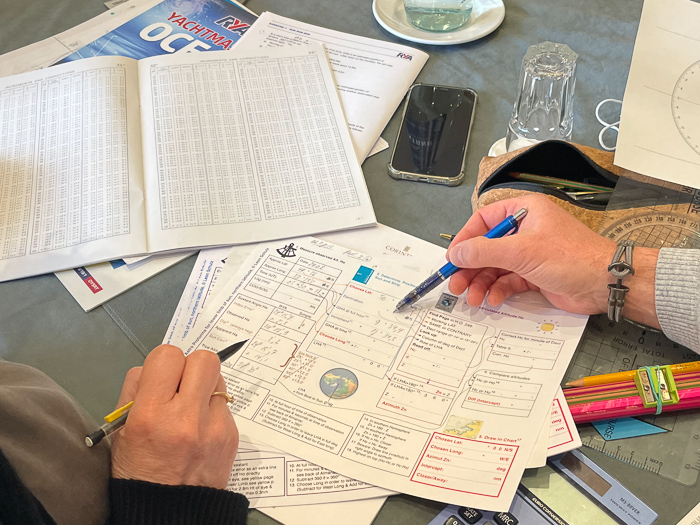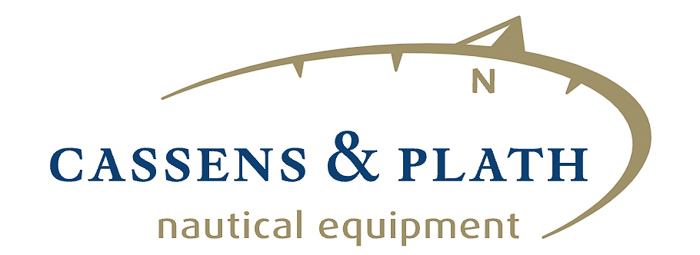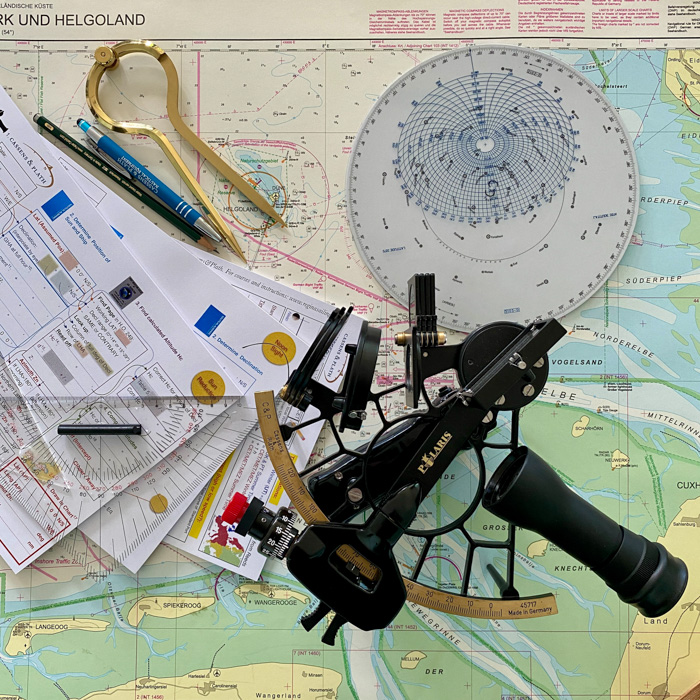
Sextant, Astronavigation, Cassens_Plath, Template, Proforma, Sight Reduction
Co-operation with the major suppliers of books and sextants
After years of co-operating with UK-based Bookharbour.com, Reginasailing has recently expanded its services to now to also closely working with the absolute leading manufacturer of yacht sextants: Cassens&Plath.
You now have the choice to buy books and a cost-effective sextant from Bookharbour with a 10% discount or to opt for the very best: Sextants directly from Cassens&Plath, made in Bremerhaven/ Germany for over 100 years!
For any purchases from Bookharbour, including books, the starfinder and sextants, use the Reginasailing discount code “rs-BHAPGG10“.
And for any purchases from Cassens&Plath’s online store, including compasses, sextants, celestial and tidal templates and much more, use the discount code: “Reginasailing10“.
Participants at the Reginasailing Ocean Theory Course get an even better deal on Cassens&Plath’s top-of -he-line sextants! So don’t hesitate to book your place on the next Yachtmaster Ocean theory course with celestial navigation. Learn ocean sailing and celestial navigation the fun and easy way by using the renown Reginasailing Templates and Reginasailing Plotting Sheets, now published by Cassens&Plath. Try out the Horizon Ultra Sextant before you buy and get outstanding offers on sextants!
To help you choose your favourite sextant, let me explain the differences and see which sextant might be the right one for you. The only sextant I would strongly advise against is a cheap plastic sextant, since these are really not suitable for navigation.

From left to right: The Astra IIIB by Celestaire, the Freiberger Sextant and the Horizon Ultra by Cassens&Plath
Astra IIIB
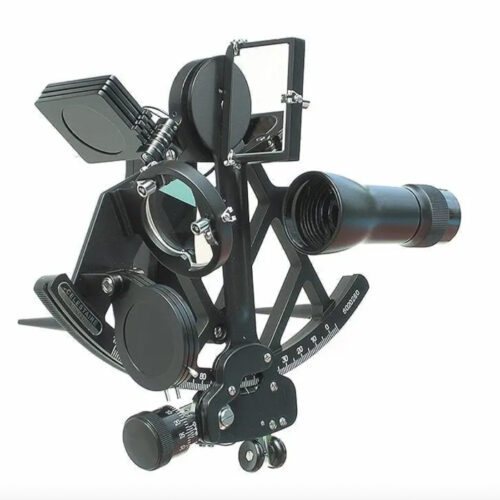
The Astra IIIB by Celestaire and made in China.
The
Astra IIIB by US-based Celestaire is the sextant I have owned myself for almost 20 years. This sextant has an excellent price-performance value and is the most popular sextant among sailors. This highly cost-effective and surprisingly accurate sextant is being sold to thousands to yachties every year. It’s designed in the USA and manufactured in China and since its launch in 1986, over 26,000 Astra IIIB have been sold in the USA alone!
It’s the perfect sextant to start with or to have as a backup and since I was a beginner myself 20 years ago, that’s the sextant I bought.
The Astra IIIB is accurate enough to get a good fix (20″ which is 1/3 or a minute), but its main drawback is the optics and obviously it has all the manual issues you are taught to master in the theory course: You need check your index error and take this into account when you do your sight reduction. Also have to look up your Dip error and take this into account as well during your calculations. And you need to be very careful to judge if your sextant is really vertical when taking the sight. For this reason you need to do a pendulum movement to make sure that the lower lim of the sun is exactly touching the horizon while you move your sextant to and fro.
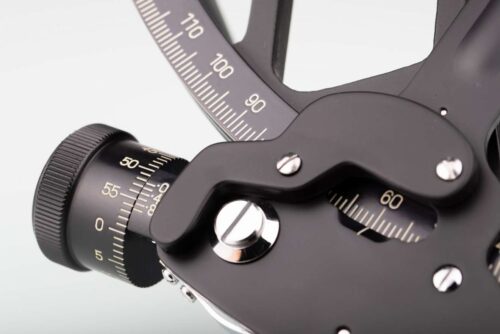
The simple standard micrometer where you read off the minutes on the arc. Then you have to do the dip and index error calculation when doing the sight reduction. Two more extra steps of maths!
This is all taught during the theory course and practiced during the practical courses and it’s just a thing you have to do with a basic sextant like this.
The accuracy of the Astra IIIB is good enough, even though there is a
Astra IIIB “Pro” versions as well, with a bronze arc fused to the aluminum frame. It’s accuracy is slightly better than the standard Astra IIIB, 15″ on the arc.
Personally, I have the basic Astra IIIB, or “De Lux” as they call this version, simply because there was no “Pro” when I bought mine 20 years ago.
If you buy the Astra IIIB you get a 10% discount from Bookharbour.com like anything you buy from them using the special Reginasailing discount code at the checkout: rs-BHAPGG10
Cassens&Plath CP Sailing
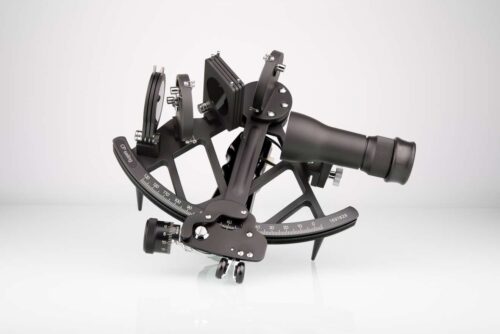
The Cassens&Plath “CP Sailing” sextant which is very similar to the Astra III DeLux and even less expensive if you join a Reginasailing Ocean course
An alternative to the Astra IIIB De Lux would be the very similar
Cassens&Plath CP Sailing sextant. It has very similar features and look like the Astra IIIB and is not made by Cassens&Plath themselves. Having said, they do individually test each sextant they sell and you get a nice certificate from Cassens&Plath.
And if you join on a Reginasailing course and get the 20% discount, this CP Sailing by Cassens&Plath is actually coming cheaper than buying the Astra IIIB from Bookharbour, even considering the 10% discout.
As a EU resident you would also avoid the hassle with dealing with Customs and pay a service fee to the courier company along with long lead times due to the act of importing from a non EU-country (Brexit!).
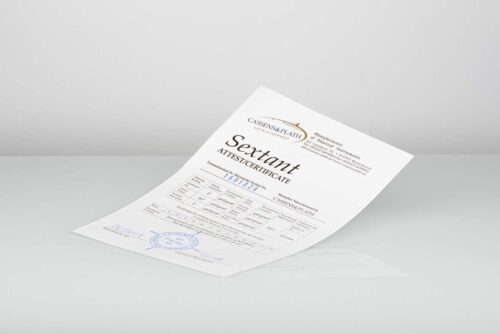
All Cassens&Plath CP Sailing sextants are individually certified.
Freiberger Sextant
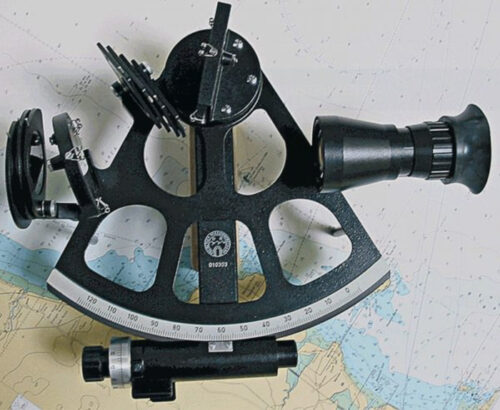
The Freiberger sextant
If you wish to go up one step, you could also consider the
Freiberger sextant, made in Germany. The Freiberger has a better optics and a larger view than the Astra IIIB. The lens is made by Jena with an aperture of 40mm (4 x 40). It’s easier to see through and better in soft light, i.e. for twilight-shooting of planets and stars.
The Freiberger has a bigger telescope part, which gives a somewhat bigger view, but there was some glare due to the shades coming into the vision field, when I tested it last.
It’s still a classic sextant with Index error, Dip and moving the sextant in a pendulum gesture to make sure you take the correct sight.
Cassens&Plath Bobby Schenk
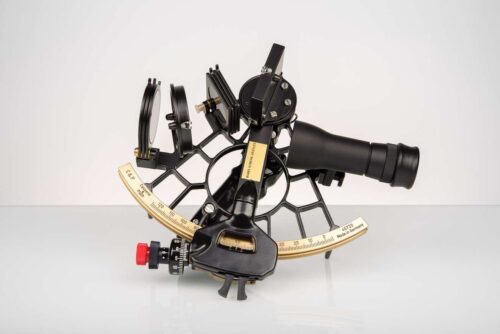
The Cassens&Plath Bobby Schenk sextant.
A sextant similar in price range as the Freiberger is the German manufactured
Cassens&Plath Bobby Schenk sextant. Bobby Schenk is a German pioneer in ocean cruising and helped Cassens&Plath to develop a special “low-cost” version of their top-line Horizon Ultra sextant (see below). It’s very similar to the Ultra Horizon but is lacking some key features.
Just like with the Horizon Ultra, it has large mirrors which makes sure that you never lose sight of the stars, even when the seas are rough and the boat experiences heavy heeling.
It still comes in an elegant wooden case alternatively in a Pelicase-style rough case and has all the mechanical accuracy as the bigger brother Horizon Ultra has. For instance, it has an accuracy of no more than 10″ on the arc and has a great optical lens. The optics is important for being able to see weak bodies on the sky, such as starts.
While the Booby Schenk has an adjustment for Index Error, you still have to do the calculation for your Dip in your sight reduction table. And: you still need to move the sextant like a pendulum to find the correction measurement.
Optionally, in order to save yet more money on this fine precision instrument, the Bobby Schenk sextant can also be bought in an inexpensive plastic box. This is called the
Bobby Schenk Astro Classic.
Don’t forget your 20% discount when joining a Reginasailing Theory course!
Cassens&Plath Ultra Horizon
This the the top line of any yacht sextant with all bells and whistles. The
Cassens&Plath Ultra Horizon is what I will use from 2023 onwards in parallel with the Astra IIIB to have as a comparison.
First of all it has all the accuracy and the features of the Bobby Schenk sextant, such as the large mirror which makes sure that you never lose sight of the stars, even when the seas are rough and the boat experiences heavy heeling.
In addition to this, it has the following additional features of which the first three ones are really worth mentioning:
- Polarisation Filters
- Double Schüler Prism
- Dip as well as Index error adjustment directly on the drum
- Neck strap
- Non-slip legs
While No 4 and 5. are nice to have and self-explanatory features, let me explain the smartness of No 1- 3 one by one.
Polarisation shade lenses
The polarisation filters are very handy to get rid of the glare on the horizon while still getting a good picture. You can turn the filter and allow for continuous adjustments toward the horizon as well as the sky.
Schüler Double Prism
The double prism according to Schüler is preinstalled on the Cassens&Plath Horizon Ultra. It is mounted in front of the shadow glasses in direction of the horizon. The lens is shaped in such a way that it cuts out a vertical area in the middle of the horizon viewing beam.
This provides two advantages for sun observations:
- The sun’s reflections on the water surface are faded out and there are no measurement errors caused by glare.
- An inclination of the sextant can be clearly recognised as a step in the horizon.
This is really smart! Since with all other sextants you need to make sure the sextant is held exactly vertically – no inclination must occur during the measurement! If not, you measure a too large angle. Only if the sextant is held exactly vertical you are measuring the correct angle. And this is where most sailors have their problems and you get your measurement wrong!
In order to make sure you hold the sextant vertically you normally have to swing it to and fro in a pendulum movement and check that the sun (or any other celestial object) is exactly “kissing” the horizon with its lower limb while swinging past. That’s when you must take the accurate time of shooting!
With the built-in Schüler Double Prism, the sextant tells you instead when you’re exactly vertical without any inclination! Every little sloping of the sextant is immediately visible on the horizon. No more pendulum necessary! How practical!
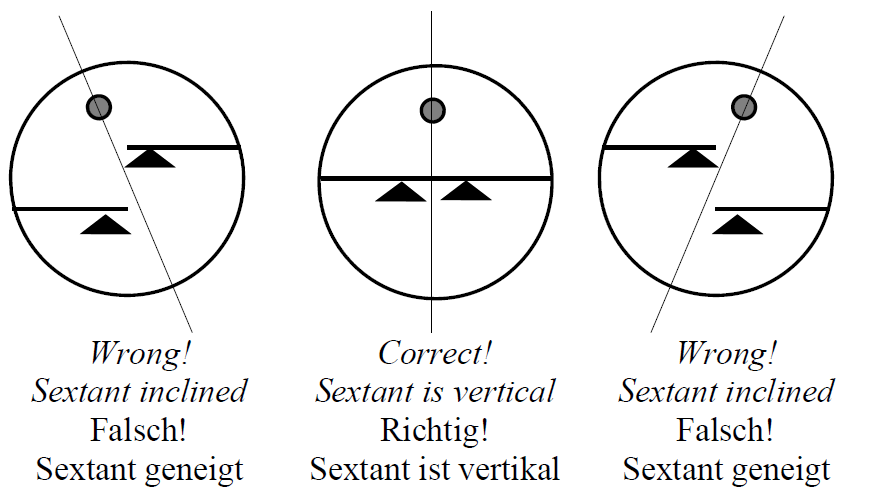
The sextant tells you if you are holding it vertically simply by observing the horizon!
In reality, it would look like this:
Setting the Index Error and Dip Error directly on the sextant
As part of the celestial theory course you learn to correct for the Index Error of the sextant and thereafter to take your hight of the eye into consideration and correct fort that, which is called the Dip Error. But since the index error seldom changes (unless you change something on the sextant) and the hight of the eye in principle always remains the same on the same boat, why not pre-setting these once for all your sextant? Then you don’t have to bother about these corrections any more (other than checking them from time to time).
The Cassens&Plath Bobby Schenk sextant corrects for Index Error, while the Cassens&Plath Horizon Ultra corrects for both. It was actually Bobby who invented the adjustment of the Index error (and I honour Bobby for this during my courses!), while the Dip correction is a further development by Cassens&Plath.
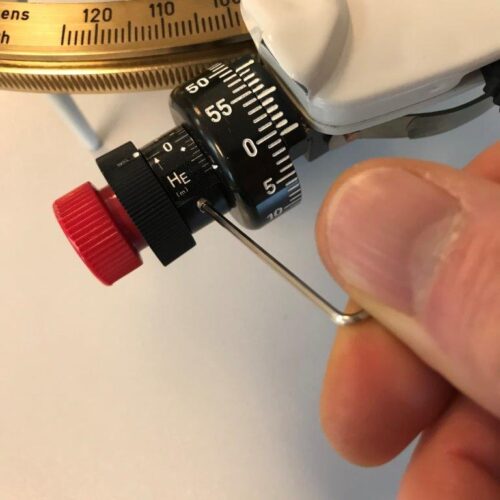
Setting the dip and index errors and then “fix” them by the means of an allan key.
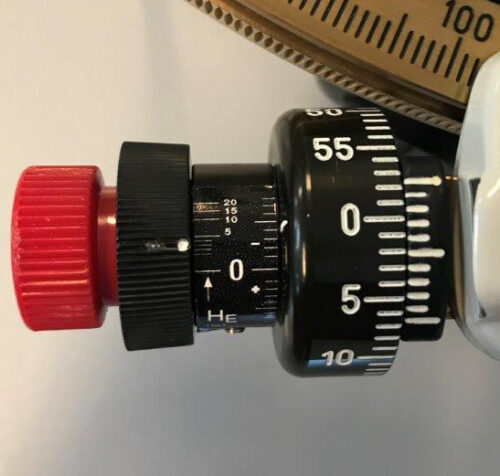
Read off the correct angle on the sextant with Index Error and Dip already taken into account!
Check here, how it is done in a step-by-step explanation.
Full view or split view or clear view mirror?
Choose between full view (simpler to use, great for sun-shots) or split view (traditional, a bit more difficult to use but allows for shooting starts for longer since without the semi-transparent mirror, it’s clearer to see the horizon in the dark).
Cassens&Plath also have a special “clear view mirror” that is especially handy since it combines the best of both worlds for shooting stars at night. This is found on their
Cassens&Plath Polaris Sextant.
So: What type of mirror?
The answer is: If you mainly plan to shoot the sun, the full view is way more comfortable and easier to use. But due to the fact that you use a full semi-transparent mirror, you “loose” some light, which doesn’t make any major difference during day-time. But during twilight when you shoot faint stars on a hardly visible horizon, you are happy for any light you get! So during twilight, it’s easier to see the dark objects in a split-mirror version.
Planets are so bright, by the way, so you an easily shoot them while the horizon is still very well visible. So for planets, a full view sextant works well.
So only if you really plan to use your sextant for stars, i.e. only during the 30 minutes during twilight and with to prolong this observation time a couple of minutes longer into the dark time, I would possibly go for the split-mirror. Otherwise, and in order to make your life easy, do go for the full-few version is my suggestion.
While the Astra IIIB can be bought in both versions, Cassens&Plath’s above mentioned sextants all sell as full-view sextants. Their semitransparent mirror and their optics is so good, that they work well even at weaker light.
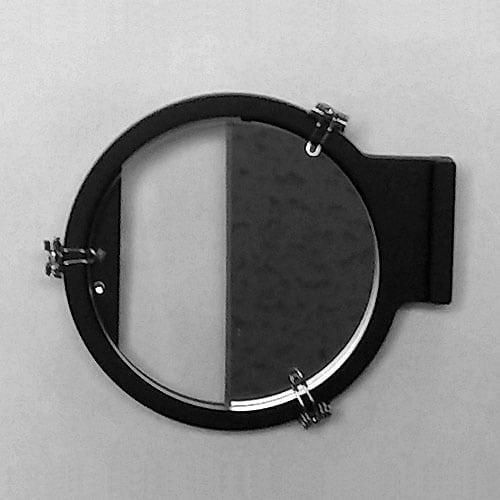
Spare Split-view mirror for Astra IIIB
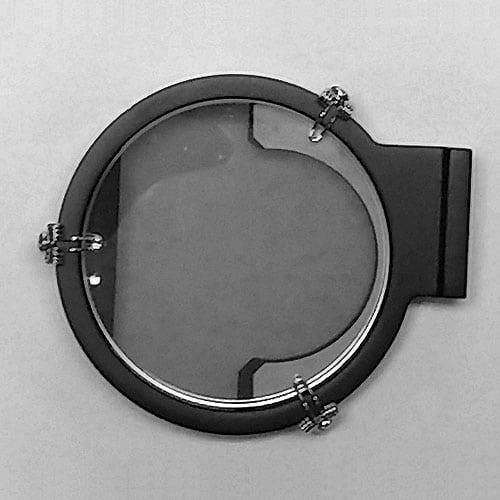
Spare whole-view / full-view mirror for Astra IIIB
Note that you can also buy a second mirror to your Astra IIIB so you can interchange between the two models.
“Whole horizon mirror” or “full view mirror”
With a full view mirror, you see the horizon and the star in the same picture at the same time. This is thanks to the fact that the mirror is semi-transparent.
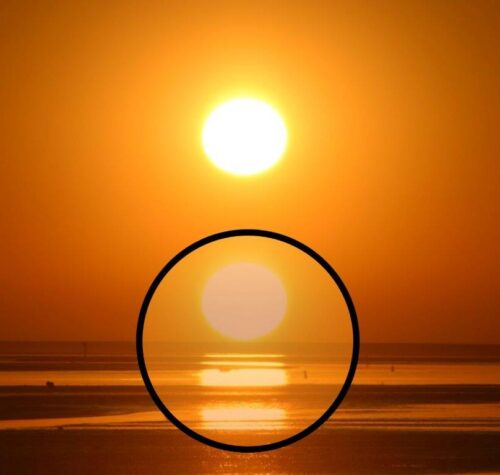
Semi-transparent full-view mirror
Advantage:
- The star/sun can easily be kept in the field of view in turbulent seas.
- Star/sun and horizon are always in view at the same time
- The observation is simplified
Disadvantage:
- The brightness of the horizon image is reduced due to the semi-transparent mirror that can make twilight observations more difficult
“Traditional mirror” or “split view mirror”
With a traditional half or split mirror, you see the sun in one half and the horizon in the other half.
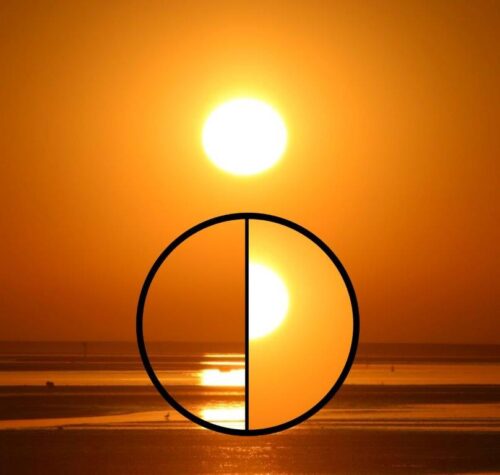
In a split-view mirror, you see the full brightness of the sun in one half (real mirror) and a clear view of the horizon in the other half (no mirror, straight view out towards the horizon)
Advantage:
- A maximum brightness of the horizon view for twilight observations
- The edge of the mirror simplifies the vertical orientation of the sextant
Disadvantage:
- Star and horizon are separated
- The measurement is only possible if the direction to the star is kept exact
- “Swinging the arc” to find the base point on the horizon is difficult.
“Clear-view mirror”
The clear-view mirror was developed by Cassens&Plath. The central vertical part of the mirror is half-silvered and thus semi-transparent while the area around this central part is not. The sides are thus not mirrored at all and offer a clear view of the horizon.
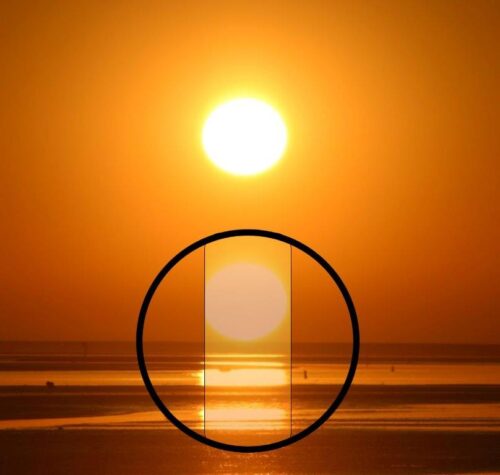
The special clear-view mirror of the Cassens&Plath Polaris sextant.
Advantage:
- Clear view of the horizon
- Star and horizon are simultaneously in view in the centre
- Good light conditions at sea by day and night
- Combines the advantages of the traditional split-view and full-view mirrors
- Observations are simplified
The
Cassens&Plath’s Polaris sextant is especially designed for shooting (faint) stars, even when the horizon hardly is visible – long before the sun rises and long after the sun has set.
The clear-view combines the the best of the two worlds of a full-view and a split-view sextant.
Astigmatizing Lens
If you don’t have the practical Schüler prism for making sure you hold the sextant exactly vertically, you can add an astigmatizing lens to the own Cassens&Plath full-view sextant (e.g. the Bobby Schenk sextant). The Cassens&Plath Polaris sextant already has the astigmatizing lens built in, by the way.
This is very practical for shooting stars whereby finding your vertical position of the sextant is made easy. The astigmatizing lens spreads the light of the star into a horizontal line so that an unintentional inclination of the sextant can be clearly recognised.
Just keep this star’s line parallel and on top of the horizon and – voilà – you got it all right!
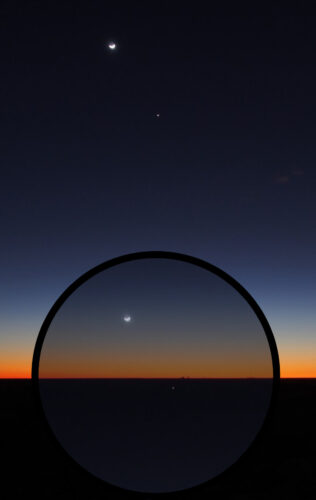
Full view without star astigmatizing lens
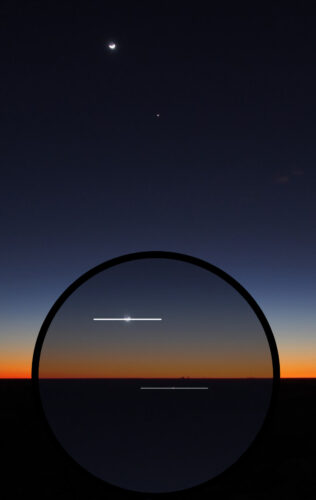
Full view with star astigmatizing lens. Perfect shot without inclination: The sextant is nicely held vertically.

Full view with star astigmatizing lens. The sextant is tilted anticlockwise. Not good! straight up the sextant until the line becomes horizontal. Then place the white line on top of the horizon. Can’t be easier to shoot stars during twilight!
Start Finder
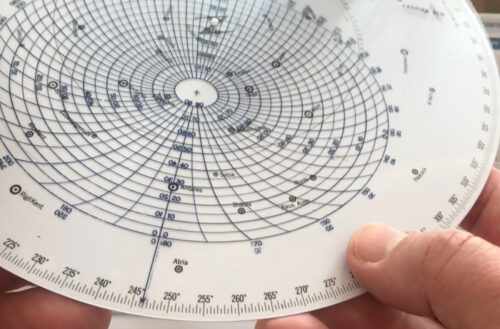
A very nice thing to own is the Weems&Plath
Star Finder 2102-D. During your celestial practical sailing course, you will learn to use it and find it really helpful to find stars and planets for twilight shootings.
Necessary books
To work with a sextant you need the following books, which you can buy at Bookharbour as well:
Please note:
– The Paperback and Admiralty are both the HO249 tables and identical. One is just a bit more fancy and larger than the other one
– Only the Nautical Almanac needs to be purchased annually, the Sight Reduction Tables are good for decades.
Templates
For years, I have been developed my own templates for celestial navigation which I use when I teach. They are also part of the
video course here.
For a contribution to my work I can send you these as PDF’s. Please
contact me if you are interested in the templates.
10% Discount from Bootharbour.com
Get 10% discount on anything from books, sextants and much more at
Bookharbour.com by using the discount code
rs-BHAPGG10
10% Discount from Cassens&Plath



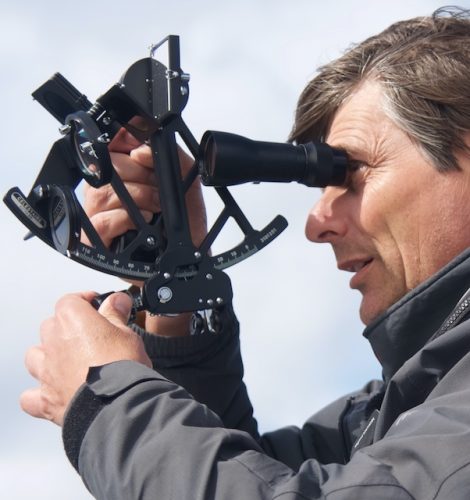





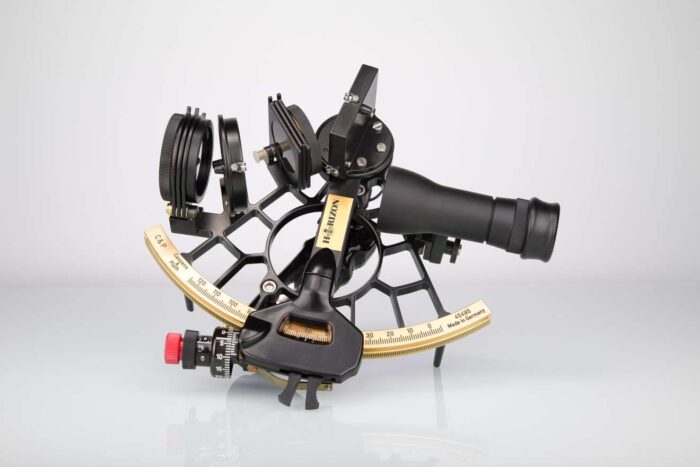

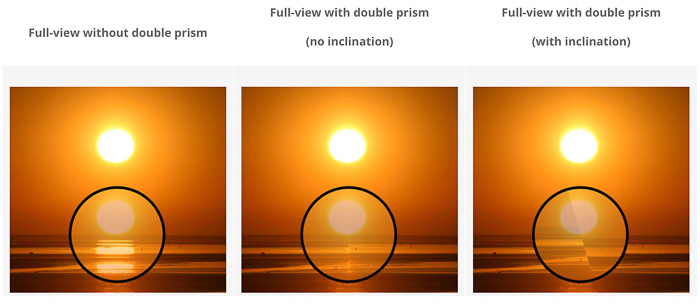


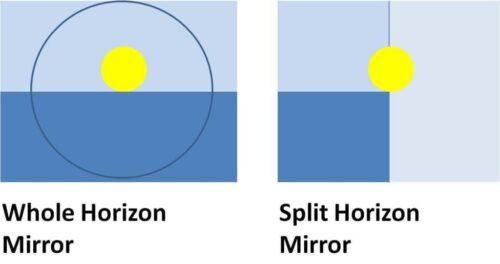








 A very nice thing to own is the Weems&Plath Star Finder 2102-D. During your celestial practical sailing course, you will learn to use it and find it really helpful to find stars and planets for twilight shootings.
A very nice thing to own is the Weems&Plath Star Finder 2102-D. During your celestial practical sailing course, you will learn to use it and find it really helpful to find stars and planets for twilight shootings. 